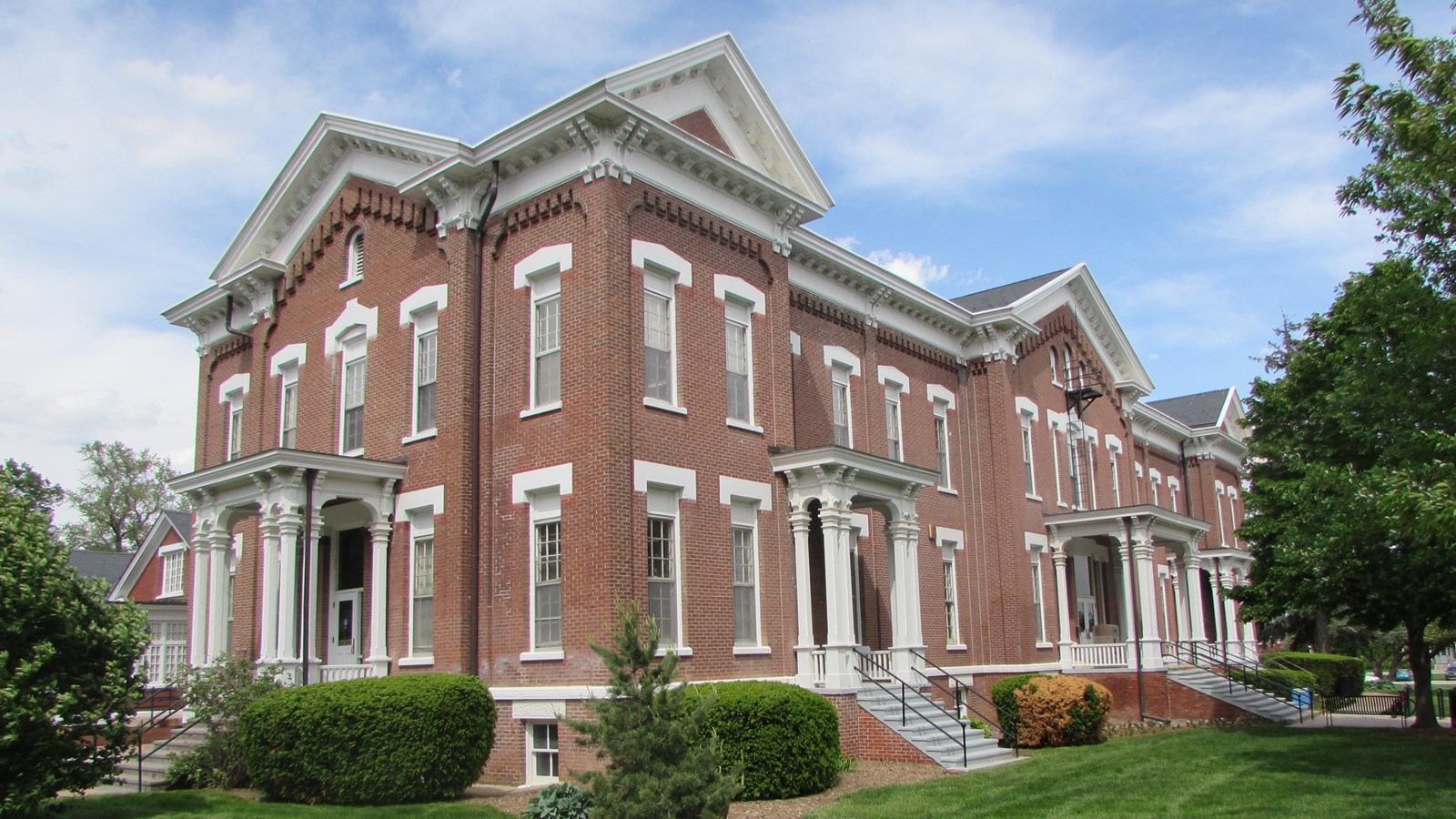Last updated: September 2, 2022
Place
Fort Omaha Historic District

David Calease, NPS
Quick Facts
Location:
30th Street between Fort Street and Laurel Avenue
Significance:
Military
Designation:
National Register of Historic Places; Omaha Local Landmark
MANAGED BY:
Metro Community College; Douglas County Historical Society
United States Army troops first arrived in Omaha in 1862 to carry out the duties of the newly created Military District of Nebraska. In 1868, the prospect for a company-sized unit in Omaha led to the construction of Sherman Barracks, later called Omaha Barracks, in 1868. The eighty-one-and-a-half-acre site was renamed Fort Omaha in 1878. The area included a post headquarters, guardhouse, bakery, storehouses, and store as well as ten company sized barracks. In 1871, band barracks, an icehouse, and quarters for laundresses and married men were added. In 1878, three new brick buildings were completed, including the General George Crook House.
Fort Omaha also played a role in an 1879 legal case, in which MaNchú NaNzhíN (Standing Bear) of the Ponca tribe successfully sued the United States government for the write of habeaus corpus. The Ponca traditionally lived on the land just north of present-day Omaha along the Niobrara River plain before they were removed to Indian Territory in Oklahoma by the U.S. government in 1877. MaNchú NaNzhíN, while attempting to return to the Ponca homeland to bury his son, was arrested and held at Fort Omaha, because it was illegal for him to leave Indian Territory without the permission of the U.S. government. The subsequent trial took place at Fort Omaha, which is commemorated with a historical marker on the parade grounds in the center of the Fort.
Fort Omaha holds a prominent place in the history of Nebraska and the United States. Soldiers from the Fort provided protection for the construction of the Union Pacific Railroad in the 1860s, patrolled the streets of frontier Omaha, and participated in the American Indian Wars of the 1870s, 1880s and 1890s. During World War I it was the site of the Fort Omaha Balloon School, where military personnel received training in operating observation balloons for intelligence gathering and artillery spotting.
Listed in the National Register of Historic Places and designated as an Omaha Local Landmark, today Fort Omaha is home to the Metropolitan Community College’s Fort Campus. Many of the historic brick buildings associated with the Fort remain and have been reutilized as administrative and classroom buildings. Also within the district is the General Crook House Museum which is open to the public.
Fort Omaha also played a role in an 1879 legal case, in which MaNchú NaNzhíN (Standing Bear) of the Ponca tribe successfully sued the United States government for the write of habeaus corpus. The Ponca traditionally lived on the land just north of present-day Omaha along the Niobrara River plain before they were removed to Indian Territory in Oklahoma by the U.S. government in 1877. MaNchú NaNzhíN, while attempting to return to the Ponca homeland to bury his son, was arrested and held at Fort Omaha, because it was illegal for him to leave Indian Territory without the permission of the U.S. government. The subsequent trial took place at Fort Omaha, which is commemorated with a historical marker on the parade grounds in the center of the Fort.
Fort Omaha holds a prominent place in the history of Nebraska and the United States. Soldiers from the Fort provided protection for the construction of the Union Pacific Railroad in the 1860s, patrolled the streets of frontier Omaha, and participated in the American Indian Wars of the 1870s, 1880s and 1890s. During World War I it was the site of the Fort Omaha Balloon School, where military personnel received training in operating observation balloons for intelligence gathering and artillery spotting.
Listed in the National Register of Historic Places and designated as an Omaha Local Landmark, today Fort Omaha is home to the Metropolitan Community College’s Fort Campus. Many of the historic brick buildings associated with the Fort remain and have been reutilized as administrative and classroom buildings. Also within the district is the General Crook House Museum which is open to the public.
